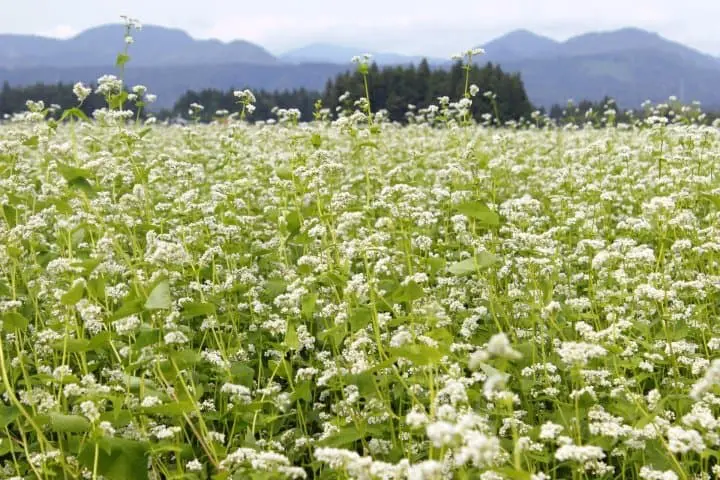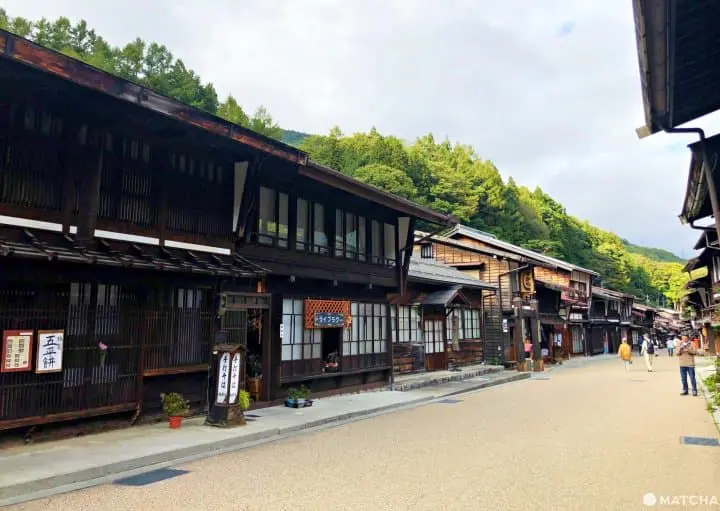Soba And History In Nagano: Recommended Buckwheat Noodle Restaurants

Nagano is home to historical sites, the great outdoors, and delicious soba. A Nagano local introduces two soba restaurants where you can eat authentic Shinshu soba, located near famous historical and cultural sites. Head on a history and food journey in Matsumoto and Shiojiri.
Enjoy Soba, Buckwheat Noodles, in Nagano

Situated in the middle of Japan near the Japanese Alps is Nagano Prefecture. Nagano, also known as Shinshu, produces a variety of agricultural products that the rest of the country enjoys. Soba, or buckwheat noodles, is one of these major products that people from all over Japan buy.
People even travel to Nagano to eat a bowl of authentic Shinshu soba. It is an easy goal to achieve, as soba restaurants are found throughout the prefecture. Rather than just eating noodles, however, try savoring this dish while visiting historical and cultural sites. With every bite, one can take in not only delicious flavors but also Nagano history and culture.
Continue reading to learn about two great soba restaurants where you can enjoy delicious cuisine in history-filled destinations, as recommended by a Nagano local.
Types of Soba Noodles in Nagano

Grown throughout Nagano, the soba plant produces white or red flowers. Later, the flowers turn into seeds that are like grains harvested in the fall; the Japanese call the fall soba “new soba”. After harvesting it they ground the grain into soba flour, which is then used to make soba noodles.
Soba noodles can be enjoyed hot or cold. Some people prefer plain soba noodles while others like the noodles garnished in nori seaweed. Accompanying the cold noodles is a chilled dipping sauce made of dashi with freshly-cut green onion stirred in.
Sides like wild mountain vegetables, mushrooms, or tempura sometimes accompany the meal. After the meal, mix the leftover water (soba yu) from boiling the soba and the dipping sauce in order to drink it.
1. Yamatou Soba near Matsumoto Castle

Yamatou Soba restaurant is on the north side of Matsumoto Castle, across the street. Inside the restaurant are tables and windows with views of the castle. This restaurant boasts an extensive history, but has a very new and comfortable ambiance.
They also have an English menu and the Japanese menu has plenty of pictures. Prices range from 500 to 2,600 yen. While most of the dishes in the restaurant use Shinshu soba, some use regular soba.

One dish, in particular, has two types of soba. Of course, all the soba use high-quality ingredients, but every month the non-Shinshu soba changes color. At the time our writer visited, the color was purple (pictured above). There is also very delicious tempura and soba to savor. Like the other places, one can really feel like they are getting the Nagano experience while eating this dish.

After enjoying soba, walk around Matsumoto. Matsumoto Castle is regarded as one of Japan's best castles and is a national treasure. The castle was built in the late 1500s and unlike many other castles in Japan, much of its original structures remain since it was constructed. The castle and Yamatou Soba are within walking distance from Matsumoto Station.
2. Sagamiya in Historic Shiojiri

Shiojiri houses the historical area of Naraijuku and is also famous for its buckwheat noodles. Take a break from exploring the historic town and enjoy some soba at the numerous restaurants, like Sagamiya (pictured above).

The restaurant is around 40 years old, with a traditional looking-exterior and quiet interior. Inside it had a very Japanese appearance and from many of the tables, you could look out and see the town. There is no English menu, but the menu is full of pictures. Many dishes include the grated yam dish.

We enjoyed hot soba with fried tofu, accompanied by a local specialty called gohei mochi. Gohei mochi is a rice cake topped with sesame or walnut sauce. Full of flavor and texture, it will give you taste of the historical site that simply sightseeing can't do.
To get to Sagamiya, get off at Narai Station on the Chuo line. After indulging in soba, walk around the historic town of Naraijuku, a former stopover along the Nakasendo, a route between Kyoto and Edo (current day Tokyo) during the Edo period.
Taste Authentic Nagano
There are many reasons to visit Nagano, but food and history are among the greatest. While many restaurants across the prefecture serve authentic Shinshu Soba, why not eat at places that offer a glimpse into the past and culture?
By doing so, one can taste history and savor the food. This is the true flavor and experience of Nagano.
Read also
In cooperation with Yamatou Soba and Sagamiya
Hello! I am Patrick Murphrey My greatest interest are culture and nature. My whole life has been dedicated to these concepts. For example, I have lived in 8 countries and traveled to more than 50 countries. Besides English, I speak fluent Spanish and Japanese. I also have worked in several of America's national parks with Yellowstone and Everglades among them. When I have some free time I go walking in the woods, ride my bike along lakes and rivers, go wildlife watching or simply take care of my garden. I still travel quite a bit due to my interest in culture and countries. I often read about countries in all my languages and I go explore them when I can. I look forward to sharing many different experiences.










































![[2026] Top 5 Strawberry Picking Spots in Tokushima, Naruto| Farms and Access Guide for January to May](https://resources.matcha-jp.com/resize/720x2000/2025/03/06-227165.webp)



